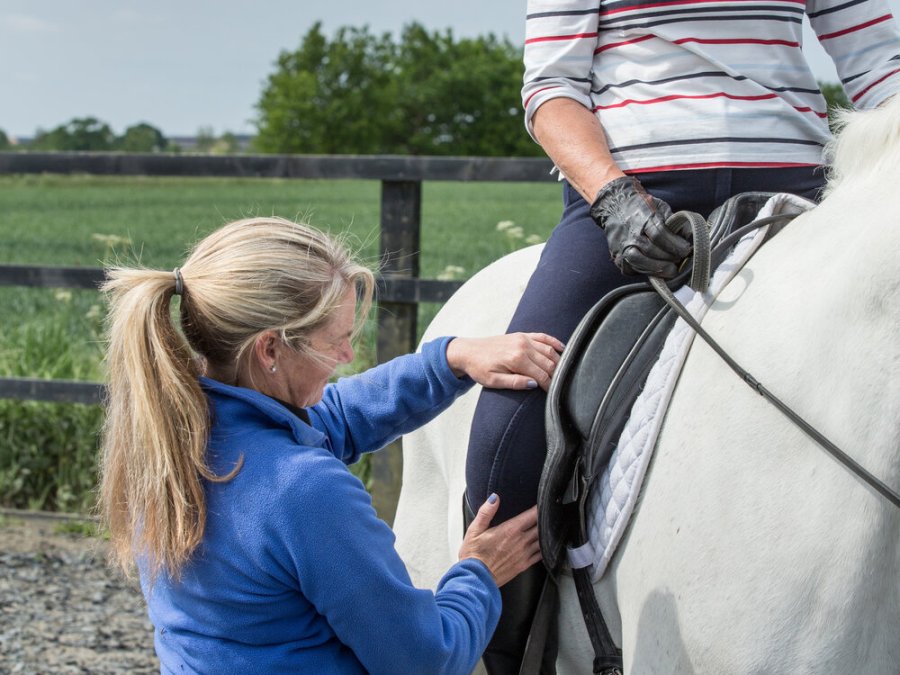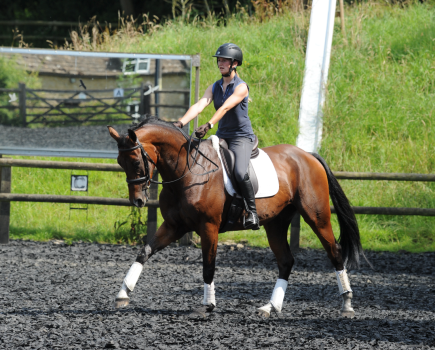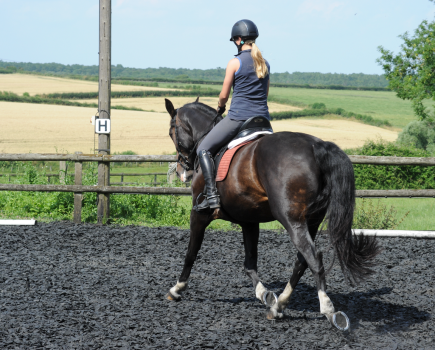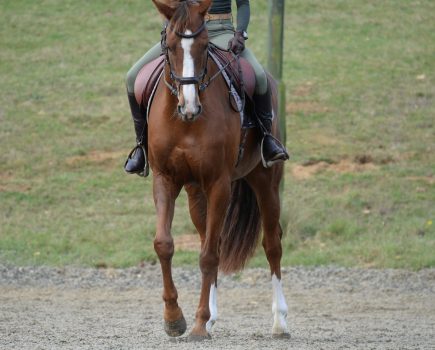The quality of your horse’s trot will make a big difference to your ability to sit to it. Ride With Your Mind coach Karin Major shares her tips to perfecting sitting trot with minimal bouncing.
Firstly, we don’t teach sitting trot until the rider can consistently maintain their horse with a flat to round back. Doing sitting trot on a horse with a hollow back is detrimental to the horse and uncomfortable for the rider. Even then, some horses have bigger trots than others, so start small and build up – that may just mean going slower for a few strides until you can consistently do more, then gradually increase the speed and impulsion.
Match the forces
Ultimately, you are trying to match your horse’s forces, both forwards and up/down. When lunged in sitting trot, riders often hold on to the pommel to stop themselves bing bounced backwards. The key is to be able to create that forward force in your own core strength, pulling in your tummy to build a wall, then pushing against the wall instead of needing to pull against the saddle. This is what Mary Wanless teaches as ‘bear down’. You also have to pull yourself down in the saddle.
Imagine you’re sitting in a chair and someone is trying to lift you out of it and you are resisting. At the same time, you don’t want to squash your horse, so your thighs must be snug on the saddle to support your weight.
Body positioning
The up/down forces are mostly transmitted through the hip joints, with your spine in a neutral, vertical position. As your horse pushes up, the front angle of your hips opens slightly; as they go down, your hips close.
You can simulate this by sitting on and bouncing a gym ball. The forces should go into the knees, not the feet, so that your seat bones aren’t pushed up off the saddle. The seat bones should be pointing down, equally balanced on each side of your horse’s spine. Spread your pelvic floor muscles to create a contact, rather than pushing up off the saddle.
Meet the expert: Karin Major was a Ride With Your Mind coach at Overdale Equestrian Centre, the UK base of coach Mary Wanless. Karin has worked with Mary for 20 years and offers lessons and clinics. She now runs Move to Improve Equestrian, the first company in the UK to offer rider biomechanics and the Feldenkrais Method in combination.
Check out our subscription offer









